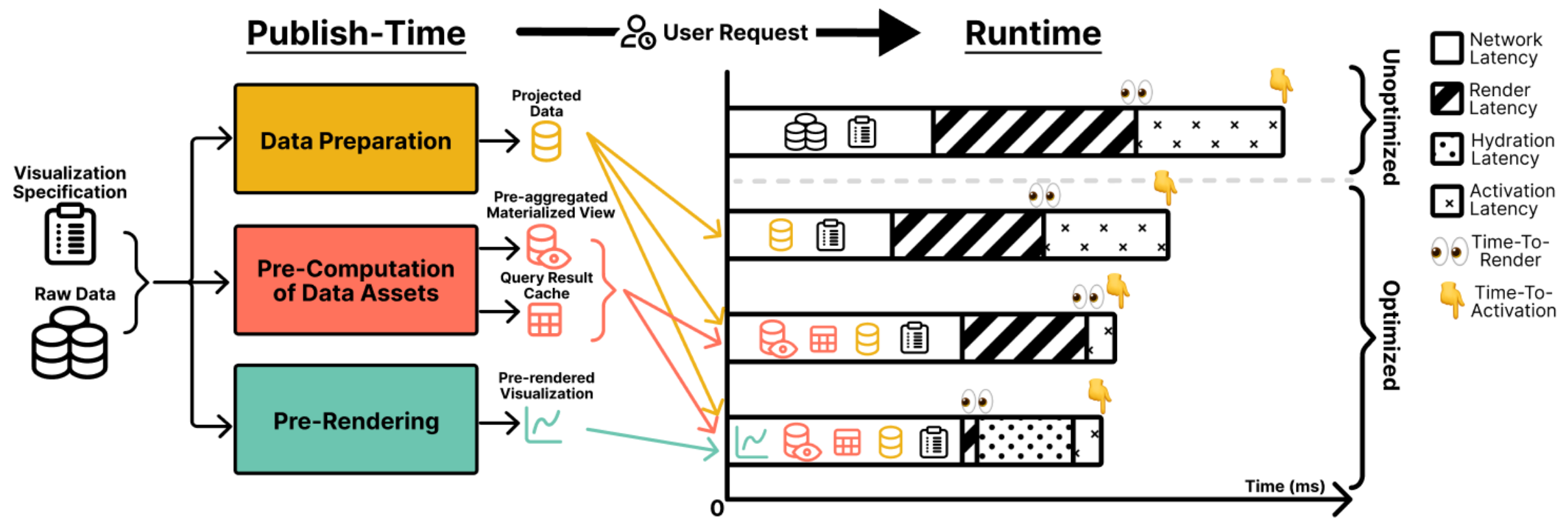UW Interactive Data Lab
papers

Publish-Time Optimizations for Web-Based Visualizations
Ron Pechuk, Jeffrey Heer.
Proc. IEEE VIS Short Papers, 2025
Ron Pechuk, Jeffrey Heer
Proc. IEEE VIS Short Papers, 2025

Materials
PDF | Best Paper Honorable Mention
Abstract
Fast loading and responsive interaction lead to more effective web-based visualizations. While run-time optimizations such as caching and data tiling improve interaction latency, these approaches leave initial load performance unoptimized. In this work, we investigate _publish-time optimizations_ that shift computational work ahead of user sessions to accelerate both loading and interaction. We organize the space of publish-time optimizations into categories of data preparation, pre-computation of data assets for optimization, and pre-rendering; and then reason about tradeoffs in terms of time-to-render (TTR), time-to-activation (TTA), and storage cost (SC). To assess their effectiveness, we implement publish-time optimizations for the open-source Mosaic architecture and evaluate their impact across varied visualizations and dataset sizes. On average, publish-time strategies reduced rendering latency by 83.7% and activation latency by 33.3%, demonstrating their value for improving the performance of web-based visualizations.
BibTeX
@inproceedings{2025-publish-time-optimizations,
title = {Publish-Time Optimizations for Web-Based Visualizations},
author = {Pechuk, Ron AND Heer, Jeffrey},
booktitle = {Proc. IEEE VIS Short Papers},
year = {2025},
url = {https://idl.uw.edu/papers/publish-time-optimizations}
}
